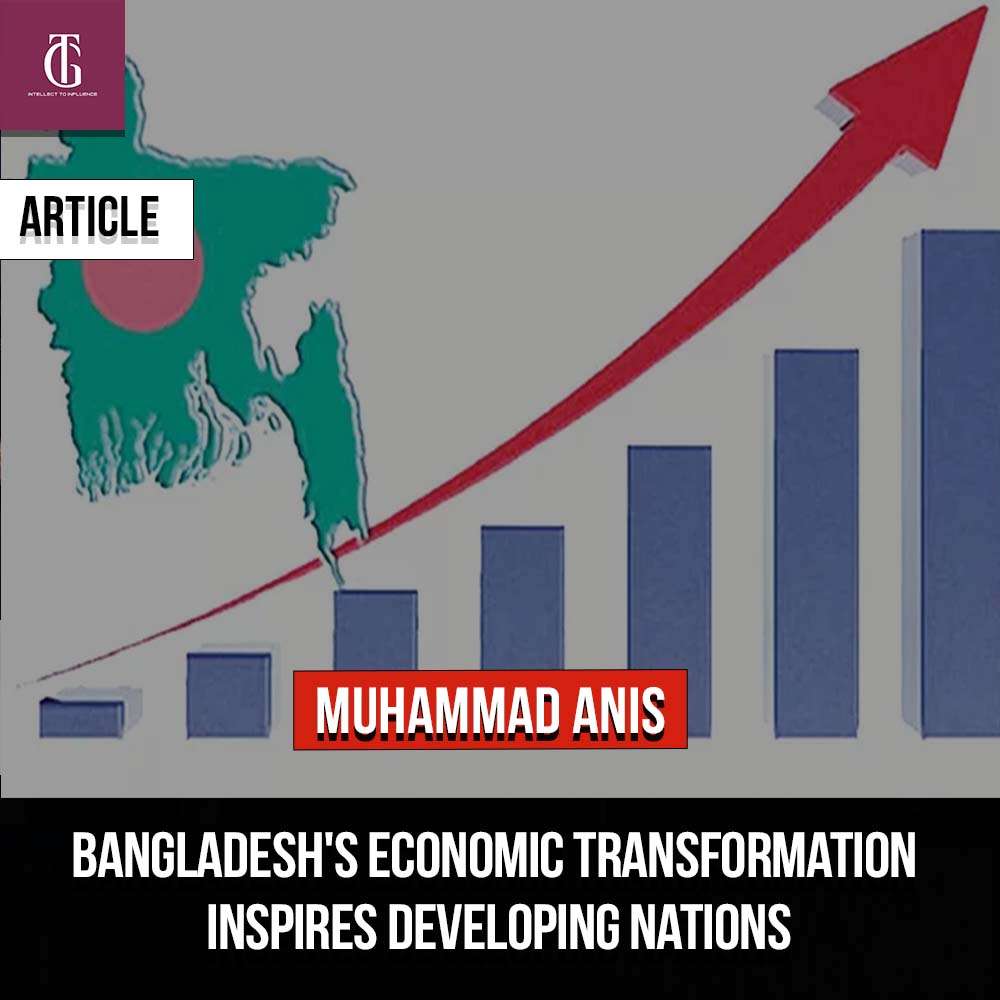
Once a nation synonymous with poverty, Bangladesh has undergone a remarkable metamorphosis, emerging as a development marvel. This former poster child for adversity has transformed into an economic powerhouse, with a vibrant clothing sector that competes with the best in the world. Bangladesh’s story is about more than simply financial success; it is also about human improvement. The country has seen a significant drop in poverty, lifting millions out of economic suffering and promising a brighter future. Nevertheless, Bangladesh’s journey has not been without hurdles. As the world recovers from the pandemic, Bangladesh faces some temporary challenges. Nonetheless, the country’s economic story is one of perseverance, strategic planning, and steadfast dedication to prosperity. Bangladesh’s success teaches vital lessons for developing countries around the world, demonstrating that well-defined legislation, a competent workforce, and an emphasis on social development may pave the way for a better future.
Bangladesh’s transformation from terrible poverty to a lower-middle-income powerhouse is a moving narrative. This erstwhile struggler now has a thriving garment sector, a monument to planned growth. While the pandemic produced immediate hurdles, Bangladesh’s economic core remains solid, with prospects for continued expansion. This resilience is a beacon of hope for developing countries, demonstrating the effectiveness of clear policies and a focus on social advancement. While the World Bank anticipates a slightly slower GDP growth rate of 5.6% and 5.7% for Bangladesh in FY24 and FY25, this should not cause concern.
This moderation is due to temporary reasons such as inflation and the pandemic’s long-term repercussions on economies around the world. In reality, the expected growth rate still exceeds the pre-pandemic average of 6.6%, demonstrating Bangladesh’s amazing economic resiliency. The country’s ability to negotiate these global obstacles while maintaining growth above pre-pandemic levels reflects its diverse economy and strategic policies. This short slowdown should not be confused with stagnation, as Bangladesh’s solid foundations position it for long-term growth. It’s crucial to remember that slowed growth is only a transitory occurrence.
As Bangladesh navigates these hurdles and inflation eases, the economic trajectory is projected to resume. The economy’s strong foundations and focus on key growth drivers are expected to propel it forward in the long run. This temporary slowdown is not the same as stagnation, and Bangladesh’s solid foundations position it for long-term growth.
Bangladesh’s economic growth during the last two decades is a remarkable story of transformation. It was once a poor country, but it has since advanced to lower-middle income status, with a thriving clothing industry. This achievement can be ascribed to numerous crucial factors. Market-oriented reforms fueled an increase in garment exports, propelling Bangladesh to the top of the world apparel manufacturing rankings. Millions of Bangladeshis working abroad send remittances home, bringing important foreign currency into the economy. Furthermore, the government’s emphasis on food security has resulted in self-sufficiency, shielding the country from external price shocks and freeing up resources to invest.
Furthermore, Bangladesh has a strong pharmaceutical industry that meets the majority of domestic demand for pharmaceuticals while reducing reliance on imports. Recognizing the value of a competent workforce, the government has expanded education spending to promote innovation and long-term economic prosperity. Finally, efforts that promote gender empowerment help women reach their full potential and contribute to a more inclusive society. Bangladesh’s experience provides a roadmap for success in the developing world. Their strategic adoption of market reforms and investment in social development, particularly education and female empowerment, has resulted in excellent outcomes. While issues such as inflation continue, Bangladesh’s economic resiliency is obvious. This incredible story serves as a light of hope, demonstrating that well-defined legislation, a focus on social advancement, and a competent workforce can pave the road for a brighter future.
While navigating a post-pandemic environment, Bangladesh’s economic outlook remains positive. The Asian Development Bank (ADB) expects a more optimistic trajectory, with growth rates of 6.1% and 6.6% in 2024 and 2025, respectively. This means that the economy is accelerating, with growth rates perhaps exceeding those before the outbreak. This hopeful prognosis reflects Bangladesh’s resilience and strategic economic measures. The country’s experience serves as an inspiration to emerging countries, demonstrating the value of strategic planning and a focus on long-term progress.
Bangladesh is also expected to leave the list of Least Developed Countries (LDC) by 2026, which is a significant milestone. This accomplishment is a strong representation of the country’s amazing progress. It represents Bangladesh’s transition from a poor country to a lower-middle-income country with a thriving economy. This graduation demonstrates the effectiveness of the Bangladeshi government’s strategic strategies adopted throughout time. These policies, which include market-oriented reforms, investments in education and infrastructure, and an emphasis on export-driven growth, have established the framework for long-term economic success.
To wrapping up my discussion, Bangladesh’s narrative is one of amazing transformation and a source of hope for underdeveloped countries. Bangladesh’s success, from overcoming extreme poverty to achieving lower-middle-income status and fostering a booming textile industry, demonstrates the value of planned development. While there have been temporary hiccups, the country’s economic fundamentals remain solid, with growth expected to continue. Bangladesh’s journey teaches vital lessons: well-defined regulations, a competent workforce, and a dedication to social improvement are the foundations of a better future. As the country navigates a post-pandemic world and transitions from LDC status, its tale exemplifies perseverance, strategic planning, and the transformative impact of well-defined development initiatives.





